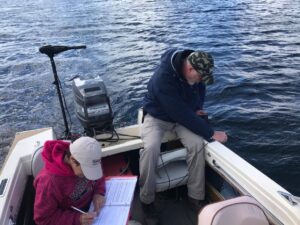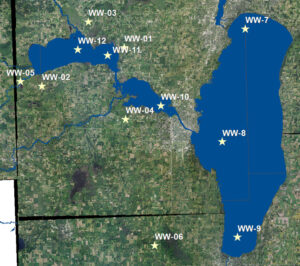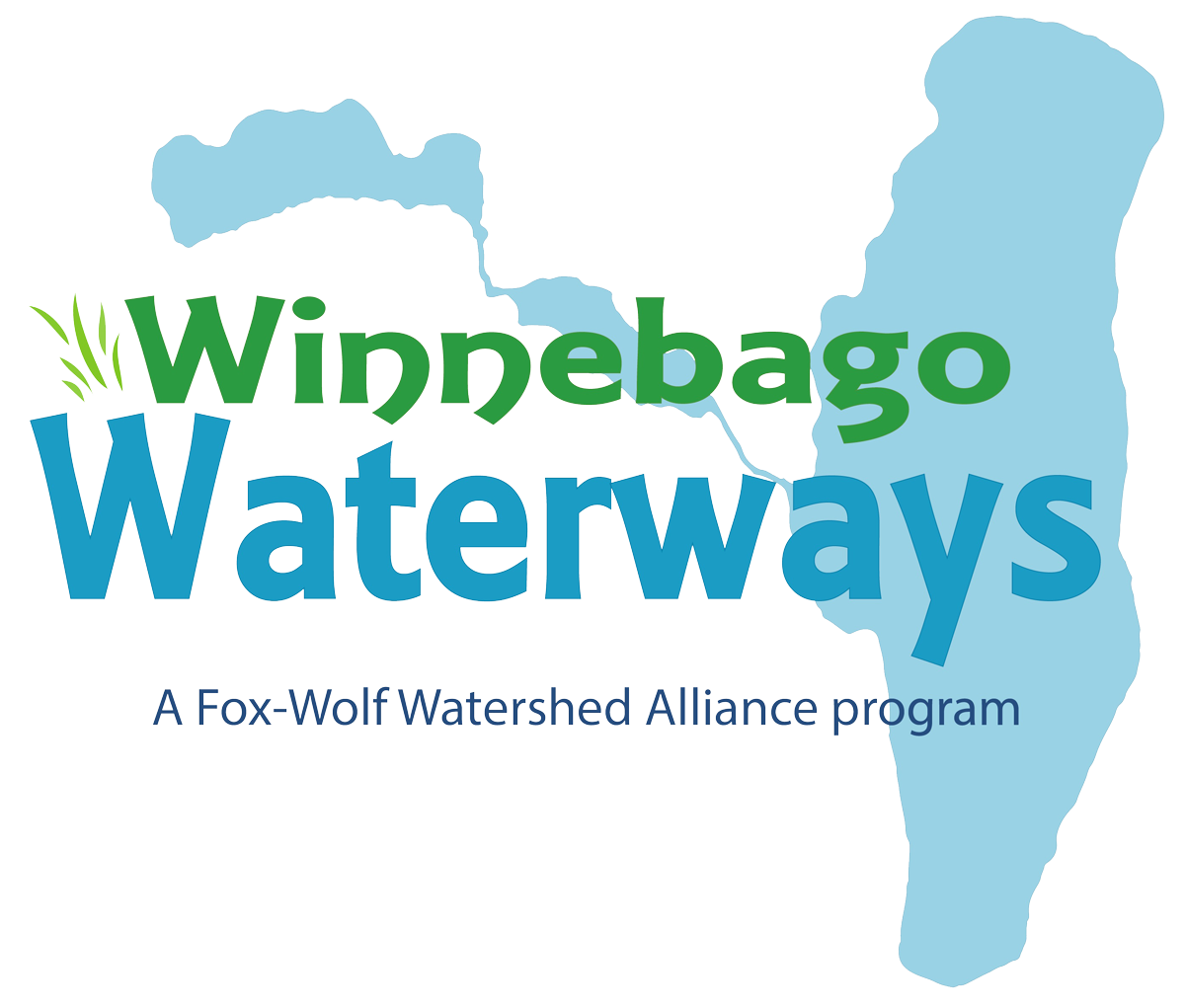Winnebago Waterways Recovery Area Water Quality Monitoring Program
 The Winnebago Waterways Water Quality Monitoring Program (WQMP) provides volunteer-based stream and lake water quality monitoring at priority locations within the Winnebago Waterways Recovery Area.
The Winnebago Waterways Water Quality Monitoring Program (WQMP) provides volunteer-based stream and lake water quality monitoring at priority locations within the Winnebago Waterways Recovery Area.
The goal of our water quality monitoring program is to annually characterize total phosphorus concentrations and associated chemical, physical, and biological characteristics in the Winnebago Lakes and priority tributaries during the growing season (May through October). Monitoring data are used to better inform recovery efforts in the Winnebago Waterways Recovery Area as well as assess the effectiveness of management actions that aim to improve and protect water resources.
The WQ monitoring program is coordinated by the Fox-Wolf Watershed Alliance. Monitoring is conducted by volunteers, students, Fox-Wolf staff, and other conservation professionals. The methods used for the WQMP are based on statewide monitoring programs such as the Water Action Volunteers (WAV), Citizen Lakes Monitoring Network (CLMN), and Wisconsin DNR Long-term Trend monitoring (LTT).
In-Lake Water Quality Monitoring
Water quality volunteers collect valuable data that are used by our organization and other agencies working to improve and protect water quality and habitat. The data allow us to assess:
- The health of the lakes
- The effectiveness of watershed recovery efforts such as conservation farming practices
Winnebago Waterways Lake Volunteers are asked to:

- Complete a training
- Collect data 1-2x per month from ice off through October
- Accurately record and submit data to the WW Program
- Take measures to prevent the spread of AIS
- Maintain equipment in good, working condition
- Return equipment at the end of the sampling season
As a WW Lakes Volunteer, you will learn how to measure and sample for the following baseline parameters:
- Dissolved oxygen (DO)
- Temperature
- Transparency
- Conductivity
- pH
Some volunteers will also collect water samples to send to the lab to be tested for:
- Total phosphorus (TP)
- Soluble Reactive Phosphorus (SRP)
- Chlorophyll-a (Chl-a)
Stream Monitoring
Water quality volunteers collect valuable data that are used by our organization and other agencies working to improve and protect water quality and habitat. The data allow us to assess:
- The health of streams.
- The effectiveness of watershed recovery efforts such as conservation farming practices.
- The impacts of streams on downstream bodies of water.
Winnebago Waterways Streams Volunteers are asked to:
- Complete a training.
- Collect data at least 1x per month from May – October.
- Accurately record and submit data to the WW Program.
- Take measures to prevent the spread of AIS.
- Maintain equipment in good, working condition.
- Return equipment at the end of the sampling season.
Streams volunteers monitor one or more sites as part of a 2 to 3-person team.
As a WW Streams Volunteer, you will learn how to measure and sample for the following baseline parameters:
- Dissolved oxygen (DO)
- Water temperature
- Transparency
- Streamflow
- Stream macroinvertebrates
- pH
Some volunteers will also collect water samples to send to the lab to be tested for:
- Total Phosphorus (TP)
- Soluble Reactive Phosphorus (SRP)
- Total Nitrogen (TN)
- Total Suspended Solids (TSS)
More information about sites and monitoring goals can be found in the Winnebago Waterways Water Quality Monitoring Plan. CLICK HERE
To become a water quality monitoring volunteer
To become a Winnebago Waterways water quality volunteer, you will be asked to complete the following steps:
- Register as a volunteer with Fox-Wolf Watershed Alliance and sign a waiver
- Set up a WAMS and SWIMS user ID with the DNR
- Choose your monitoring sites(s)
- Complete an in-person training with the Winnebago Waterways Program
- Check-out a Monitoring Kit
- Commit to sampling for the season
You can start by contacting Katie Reed – katherine@fwwa.org or 920-851-6472 – and she will help you move through the rest of the steps.
Harmful Algae Blooms
Algae is part of our life and the life of our waters. In general, algae are not harmful and are an important link in the food web. However, not all algae is helpful. When blooms become very large (then die and take up oxygen, resulting in low oxygen concentrations) or when they produce toxins, they are considered harmful. Harmful algae can be problematic for aquatic life, pets, and even people.
Volunteers needed for the 2023 season!

Site WW-09: Lake site in Lake Winnebago, Deep Hole – South End, near Fond du Lac
(sites 01 – 06 are stream sites, while sites 07 – 12 are lake sites)
If you are interested in an unclaimed site, or another site on this map, please contact Katie at katherine@fwwa.org or 920-851-6472
Winnebago Waterways is a Fox-Wolf Watershed Alliance recovery initiative.
Contact us at wwinfo@fwwa.org

